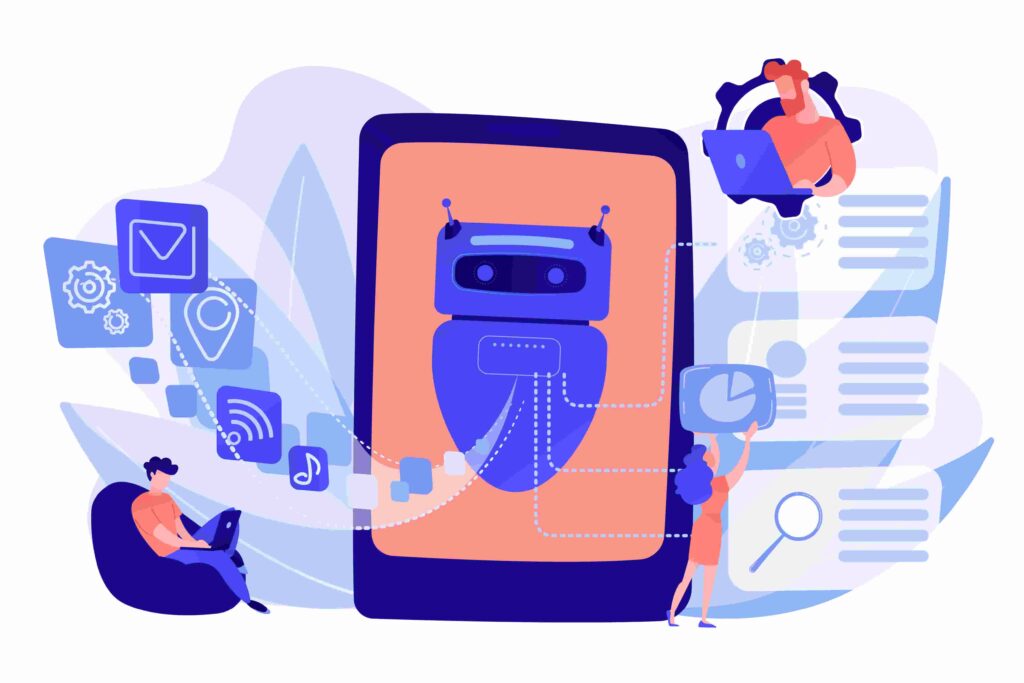Have you ever heard of Information and Communications Technology (ICT)? The acronym for Information and Communication Technology in companies has been widely used by managers from different areas in order to provide better communication between employees and even with the public.
Consumers are aware of their purchasing power, due to the large amount of information available and easily accessible. Then, with high competition, the demand for superiority in products and services, as well as in customer service provided by companies, is increasing drastically.
In this sense, to gain competitive advantage and reverse this scenario, Information and Communications Technology is being widely used. By using software, hardware and telecommunications in an integrated manner, it manages to break down social, cultural and even technological barriers that impede business success.
So, do you want to understand how this works? Keep reading this post to know the tools that use ICT and the main benefits provided by it!
After all, what is Information and Communications Technology?
Roughly speaking, Information and Communication Technology is nothing more than a set of technological tools used in an incorporated way, so the company can reach its business objective faster and more intuitively.
When implemented, ICT can automate processes, improve learning, reduce costs and facilitate research, whether internal or external. In addition, by treating procedures with a more effective and automated communication, it promotes an improvement in the customer experience and generates greater consumer satisfaction in relation to the brand.
What are the main tools that integrate information and communication?
By using Information and Communications Technology, as we said, the integration between systems improves your automation and leverages performance, seeking a common goal. So how about getting to know some of the tools that can benefit your business?
Help Desk
The help desk has as its main function to serve customers, clarifying doubts and following up on requests. By centralizing different information and reducing the time spent by the employee on the call, it facilitates problem resolution and streamlines processes.
The help desk provides insights into better solutions, in addition to being able to group different information such as service duration, request type, call status, and so on.
Email is still an indispensable tool these days. In addition to being used in the internal communication of companies, in marketing and even as a service channel, it can reach a large number of people and cover a lot of information.
Depending on the system you have, you can integrate reports and be able to enrich and better segment your lead bases. Also, by measuring KPIs, you can create a specific communication strategy for each audience and automate the entire process!
Chat
Chat is another way to automate and streamline customer service. With this tool, it is possible to customize questions and leave some answers ready to facilitate the process. Then, the user has one more channel to be able to solve a problem or contact the company, which improves their experience with it.
VoIP
Undoubtedly, VoIP is the perfect way to optimize communication in a much cheaper way. Basically, it is a technology that offers calls through alternatives to the telephone, which reduces the time and work of telephone operators.
What are the benefits provided by Information and Communications Technologyin the company?
ICT is highly usable in the IT area, as it is in this area that the development of system automation and process improvements, among other things . However, there are several fronts of an organization that can benefit from using Information and Communication Technology. So how about finding out more about them?
Integration in corporate daily life
Certainly, one of the first benefits that we must list here is how much Information and Communication Technology in companies can bring in terms of integration between employees and departments.
The use of chat and video conference tools, for example, already makes communication much easier. In addition, as they manage to improve the flow of information, the areas save time by communicating more quickly and consequently, streamline processes that demand data from other areas or even from other branches.
Development of learning processes
Information and Communications Technology is highly applied in education. Schools and universities have been using technology as a way to add value to their courses and make life easier for those who have little time or cannot get around, for example.
When we think about a company, we can see this solution as training more capable employees. Specializations and training in distance learning are very actual and bring to the workplace a way for the employee to improve his/her performance.
Operational cost reduction
Have you thought about reducing costs? This is the dream of any manager or entrepreneur, isn’t it? Because telecommunications auditing and management software can translate the functionality of ICT — after all, they combine technology with communication.
This type of tool allows the control of the time that employees spend on the phone, for example, which guarantees a reduction in the cost of this feature and greater team productivity.
Increased customer satisfaction
Customers who receive better service and move on a satisfying shopping journey tend to be more loyal to the brand. In turn, customers who defend a brand are precursors and do a positive word-of-mouth marketing, moreover lowering the cost of acquiring new customers frequently.
What is the relationship of internal communication with the IT area?
The different areas of a company need to keep in touch with each other constantly, in order to resolve the most varied issues. In case of communication that one area has with IT, the demands are generally related to the need for technical support for software and equipment.
These contacts with the technology area may be made by phone, email or chat, but it turns out that these forms of communication end up causing problems when it comes to requests for technical support.
After all, it is necessary to have a solution that sorts out the demands, allows assigning a level of priority to each request, directs the call to a specific technician, presents quality indicators in the service and so on. Want to know how to do this?
How to optimize the integration between internal communication and the IT area?
See some characteristics that must be present in the management of demands that a lot of areas send to the IT area.
Call concentration
First, it is not possible to efficiently manage tickets when information is scattered in emails, notebooks, spreadsheets and even in the memory of IT employees.
In fact, the demands must be concentrated in a single place — a software, in fact — which allows for a good management of requests, which includes good service and monitoring of results.
User experience
Employees from other areas are not just co-workers: they are internal customers. Then, they deserve to have a good experience in the service that IT offers, which involves having their demand met on time.
Metrics tracking
It is very important to measure the work that IT is doing. In the same way that the sales area has productivity goals and systematically monitors them in order to achieve them, the technology area also needs to monitor metrics related to:
- the response time;
- user satisfaction;
- costs related to a customer service;
- team performance, among others.
When the manager sets goals and monitors the results, it is possible to work to improve the quality of the service.
Demand management
Demands coming to the IT area has different degrees of priority. For example, a user requesting an email account to be set up may not need to be answered as urgent as a salesperson who has a front-line computer with a burnt font.
Therefore, even if the first request gets its ticket answered first, the second needs to be answered more urgently.
In addition, the calls must be sent to specific technicians, considering that each one usually has a different expertise.
How can help desk software help with internal communication?
All these characteristics of communication between the areas in a company and the IT area are met by help desk software. Implementing this system results in:
- increased IT team productivity;
- increased internal customer satisfaction;
- efficient tracking of deadlines;
- cost reduction;
- metrics analysis, among other benefits.
In short, different tools that use technology and integrate it with communication are becoming what differentiates a good company from a great company. As we could see, they manage to reduce costs, increase productivity and offer more knowledge and satisfaction to employees as well .
The new customer wants good experiences and knows that if one company doesn’t make the effort to offer them, another will. Therefore, the use of ICT in companies is a way to build this competitive advantage, increasing business and creating loyal customers. So, how about starting to use it?
If you liked this post, know that Milvus has several smart solutions that will make a difference in your business.
Optimize your team management, use all features without worry, test the system for 7 days free. Take a free trial!
Or contact us right now and improve your performance!






